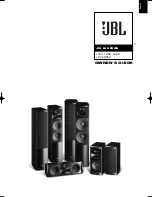
__________________________________________________________________________________________________________________
European Safety Systems Ltd.
Impress House, Mansell Road, Acton, London W3 7QH [email protected] Tel: +44 (0)208 743 8880
www.e2s.com Fax: +44 (0)208 740 4200
Document No. D190-00-011-IS-SC Issue: 5 24-04-19 Sheet 3 of 7
External Earth
Assembly
4.3 Mounting
Fig. 1 Fixing locations.
The D1x Alarm Horn may be secured to any flat surface using
the three 7mm fixing holes. The enclosure provides IP66
protection and is suitable for installation in exterior locations
providing the cable entry is sealed.
4.4 Installation procedure
a. Secure the D1x alarm horn to a flat surface via the three
7mm fixing holes in the mounting bracket.
b. Remove the explosionproof cover of the alarm horn by
unscrewing it, taking care not to damage the
explosionproof threads in the process (Refer to section
5).
c. Fit an M20/NPT suitably rated cable gland or conduit
entry into the hole in the enclosure and connect the field
wiring to the appropriate alarm horn terminals as shown
in fig. 6 (AC) or fig 8. (DC). The power supply terminals
are duplicated so that units may be connected in
parallel. An end of line monitoring resistor may be fitted
to DC units only (see section 12). If the second and
third M20/NPT entries are not used, suitably rated
stopping plugs must always be fitted.
d. Replace the explosionproof cover of the loudspeaker,
taking care not to damage the explosionproof threads.
Tighten fully.
4.5 Hornless Variants
The D1x Sounder is also available as a variant with no horn
fitted in the factory. The Horn threaded nose portion has a
fitment thread of 1-
3/8” – 18 UNF (to BS1580 or ANSI B1.1).
The customer is responsible for sourcing and correctly fitting a
suitable horn that meets all of the relevant safety
requirements.
5) Access to the Explosionproof Enclosure
In order to connect the electrical supply cables to the alarm
horn it is necessary to remove the explosionproof cover to gain
access to the explosionproof chamber. This can be achieved
by unscrewing the explosionproof cover (counter-clockwise),
taking extreme care not to damage the explosionproof threads
in the process.
Fig. 2 Accessing the
Explosionproof Enclosure.
On
completion
of
the cable
wiring
installation
the
explosionproof threads should be inspected to ensure that they
are clean and that they have not been damaged during
installation. Also check that the ‘O’ ring seal is in place, on the
thread diameter in contact with the flat face of the
explosionproof cover. When replacing the explosionproof cover
ensure that it is tightened fully.
6) Volume Control
The output level of the D1x alarm horn can be set by adjusting
the volume control potentiometer (see Fig 3). For maximum
output, set the potentiometer fully clockwise.
D1xS2AC / D1xS2DC / D1xS1DC / D1xS1AC
Fig. 3 Location of field controls
7) Tone Selection
The D1xS1 & D1xS2 units have 64 different tones that can be
selected independently for the first and second stage alarms.
The tones are selected by operation of the tone setting DIP
switches 1 & 2 (see Fig. 3) on the PCB. The alarm horns can
also be switched to sound the third and fourth stage alarm
tones. The tone table (Table 1) shows the switch positions for
the 64 tones on first and second stages and which tones are
available for the third and fourth stages dependent on the
Stage 1 DIP switch setting.
8) Stage Switching Polarity (DC Units Only)
The D1xS2 and D1xS1 DC alarm horns have the facility to use
ve or
–ve switching to change the tone to the second,
third and fourth stages. For
–ve switching connect the two
headers on the pcb to the left-hand (marked
–ve) and centre
pins. For +ve switching connect the headers to the right hand
(ve) and the centre pins. (Refer to Fig. 4)
Fig. 4 Stage Switching Polarity
Flameproof
cover
Stopping plug
(Appropriate
cable glands to
be customer
supplied)
Positive
Switching
Activated
Negative
Switching
Activated
Volume Control
Potentiometer
Stage 2
Stage 1
Tone
Selection
Dip
Switches
External Earth
Internal
Earth
Volume Control
Potentiometer
External Earth

























